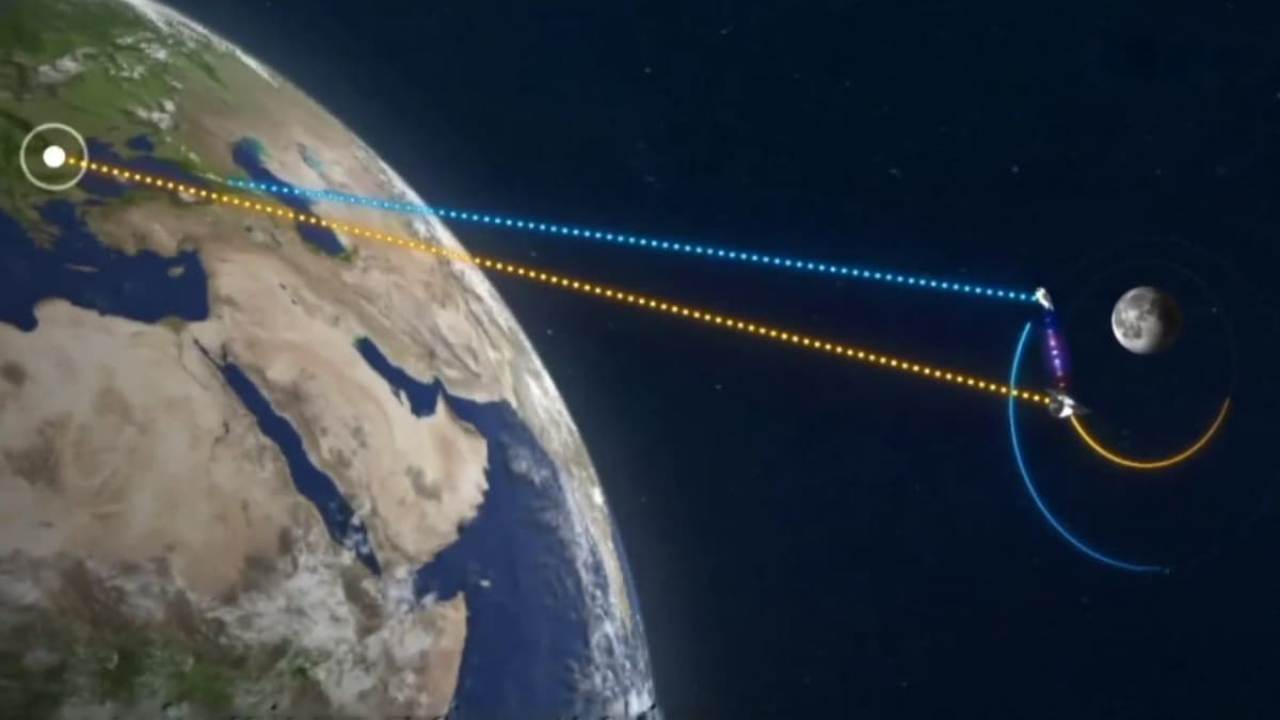China has reached a major new level in its efforts to explore deep space by successfully using lasers to measure distances to satellites flying near the Earth and the Moon.
What’s particularly remarkable is that they managed to do this during the daytime, which is the first time anyone in the world has achieved satellite laser measurements at lunar distances while the sun is out. This big step forward will help with future trips to the Moon and other parts of deep space.
These successful tests happened recently, in April and May of 2025. They were done by research groups that are part of the Chinese Academy of Sciences, like the Yunnan Observatories and the Deep Space Exploration Laboratory. They used a ground telescope with a mirror that is 1.2 meters wide and a new type of infrared laser system.
With this equipment, they were able to accurately figure out how far away satellites were in the area between the Earth and the Moon. This included a satellite in a special path called a Distant Retrograde Orbit (DRO-A), which is about 350,000 kilometers away, and another satellite called Tiandu-1, orbiting at around 130,000 kilometers.
Being able to use lasers for measurement during the day is a really important technical breakthrough. Before this, these kinds of measurements could mostly only be done at night because the bright light from the sun made it very hard to see the faint laser light that bounced back from the satellites.
By finding a way to work even with the sun’s glare, scientists can now measure distances much more often and for longer periods. This means they can track spacecraft more accurately and continuously in the large space between the Earth and the Moon.
Scientists have compared this achievement to successfully hitting a single strand of hair from 10,000 meters away while the sun is shining brightly. This comparison shows just how incredibly precise and technically difficult this was. The success is thanks to improvements in laser technology, very sensitive tools for spotting the returning light, and smart ways of processing the data that the Chinese teams developed.
Getting exact distance measurements using satellite laser ranging is absolutely necessary for guiding spacecraft correctly in deep space. This ability is especially important for China’s big plans for exploring the Moon, including building the International Lunar Research Station (ILRS). Better ways to navigate and track will be essential for safely landing on the Moon, meeting up with other spacecraft, and running the lunar base day-to-day.
While China had already shown it could measure the distance to the Moon by bouncing lasers off special reflectors left there by earlier missions, these recent successes with satellites near the Moon, especially the ability to do it in the daytime, show a new level of skill in measuring in deep space. This puts China among a small group of countries that have such advanced abilities.
These successful laser measurement tests are expected to play a key role in building a reliable system for navigating in the space between the Earth and the Moon. This will help not only science missions but also potentially future business activities and using resources in the Earth-Moon area. This historic achievement highlights China’s growing strength in space technology and its strong dedication to pushing forward in deep space exploration.
